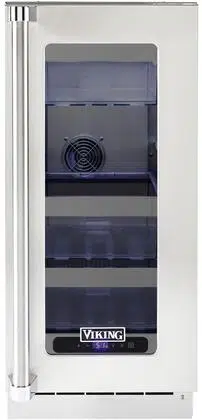Loading ...
Loading ...
Loading ...

14
The Cork: A Mystery on Its Own
Cork Presentation. The ritual of the presentation of the cork has
a rich and fascinating history dating back to the late 1800’s. A
phylloxera (root louse) devastation to the vineyards severely
limited the supply of great wines. Restaurateurs would remove
labels on inferior wines and replace them with labels from
superior wines. This made it necessary for patrons to protect
themselves by checking the branding on the cork to ensure that
what they ordered was, in fact, what they were served.
When presented with a cork today, feel it to check for its integrity,
read and match the branding on the cork to the bottle and set
it aside. There is little to be learned from the cork. The proof is in
the wine.
“Corked” wines. If you’ve ever had a wine that smelled or tasted
of mold, you’ve experienced a wine that may have been “corked.”
Today, between ve and eight percent of wines are tainted with
Trichloroanisole (TCA). This substance, found naturally in plants
and trees, is imparted to the wine through the cork. Corked wines
are a major concern for winemakers as it destroys millions of
cases per year and puts reputations at stake. Amazing as it may
seem, twist-o caps may o er a better alternative; many great
wineries in California, Australia and New Zealand are pioneering
the trend.
Operating Instructions
IDEAL WINE STORAGE CONSIDERATIONS
Temperature: The most important element about
storage temperature is stability. If wine is kept in a stable
environment between 40
º
F (7
º
C) and 65
º
F (21
º
C), it will
remain sound. A small 1-2 degree temperature fluctuation
within a stable environment is acceptable. Larger
temperature fluctuations can affect the cork’s ability to seal,
allowing the wine to “leak” from the bottle.
Humidity: The traditional view on humidity maintains that
wines should be stored on their sides in 50% - 80% relative
humidity to ensure cork moisture and proper t in the bottle.
Contemporary wisdom suggests that the cork surface is too
small to be impacted by humidity. Further, the cork is sealed
with a metal or wax capsule making humidity penetration
impossible. The concept of a humid storage environment
was derived from the necessity of wineries to maintain
moisture in their cellars to keep wooden barrel staves
swollen, preventing wine evaporation and product loss. In
fact, vineyards estimate as much as a 10% product loss per
year due to evaporation while wine is aging in the wooden
barrels. Humidity, however, was not intended for the modern
cellar where wine is stored in glass bottles with sealed corks.
Light: UV rays are not only harmful to people, they are
damaging to wines - especially those in clear bottles. Since
oxygen molecules in wine absorb UV rays, wine should never
be stored in direct light for long periods of time.
Vibration: Provided that sediment is left undistributed
and particles are not suspended, vibration in a storage
environment is not an issue. Wines can become at or
tired when voids and vacuums are created inside the wine
bottle. In order to create voids and vacuums within a liquid,
aggressive motion or shaking of the wine bottle would have
to occur.
A Toast to Wine Truths
Like the grapes themselves, many wine myths have been
cultivated over the centuries.
Myth 1: Most wines taste better when aged.
Truth: In fact, less than 5% of wines produced today are meant to
be aged. Most wines are crafted to be consumed within the rst
one to two years.
Myth 2: Wines should be uncorked and decanted allowing them
to “breathe.”
Truth: To breathe or not breathe? While it is better to allow a
young tannic Red to breathe in a glass or decanter to soften the
tannins, an old Red reaches a stage in its life where it should be
enjoyed soon after opening. Allow an old Red to breathe for a
short time to dissipate any o odors. Most white wines can be
served, ideally, 10-15 minutes after opening.
Myth 3: When age worthy wines peak, they must be consumed
almost immediately.
Truth: Most great wines reach a plateau period rather than a
peak. Great Bordeaux’s may have as much as a 10-year plateau
before fading.
Myth 4: Wine color does not change with aging.
Truth: As red wines age they get lighter in color while whites get
darker.
Foods Wines
Fish, Shell Fish, Crab, Oysters Dry White Wines, Light Sparkling
or Extra Dry Champagne
Beef, Venison Full-Bodied Red Wines
Pork, Veal, Lamb and Poultry Light-Bodied Red Wines
Fruit Sweet White and Sparkling Wines
Common Food and Wine Matches
Temperature Wines
Approximately 60
º
F (15
º
C)
Red
50
º
F - 55
º
F (10
º
C - 12
º
C)
White
Approximately 45
º
F (7
º
C)
Sparkling
Loading ...
Loading ...
Loading ...
